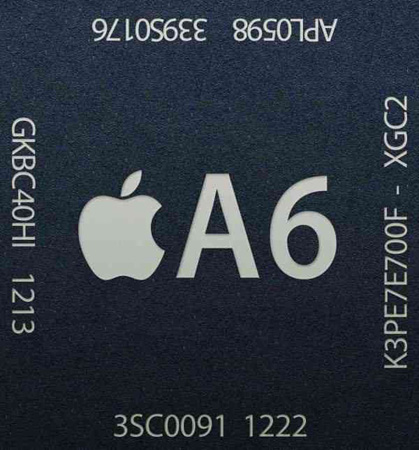
The iPhone 5 may be the hottest new phone to hit the market, but as we get closer to launch discoveries are being made about its new hardware that give us pause.
Unlike many of the latest Android phones which are ramping up core numbers and clock speeds to absurd amounts, often in exchange for battery life, Apple tends to stay fairly conservative with its hardware. It’s been determined that the new A6 chip is not in fact based on ARM’s Cortex-A15 chipset but is a custom design that takes more from the ARMv7 line. In the real world this doesn’t matter too much — all you need to be concerned about is that the iPhone 5 will indeed perform over twice as fast as its predecessor, and in many situations much more so. The PowerVR SGX543M3 graphics processor is also a significant step up from the M2 inside the iPhone 4S, and should bring ultra-smooth graphics and gaming to the iPhone 5 without affecting battery life. Battery life is rated for 8 hours of LTE browsing time, up from 6 hours of 3G browsing on the iPhone 4S.
After some forensic investigation into Apple’s A6 parts numbers, it’s been discovered that the iPhone 5 indeed does have 1GB of RAM, double that of the 4S. This is going to give a big boost to apps that need to keep lots of information such as textures and browser tabs in memory; that means less reloading of tabs, shorter app start times and overall smoother performance.
While it’s a little disappointing to see that Apple hasn’t caught the quad-core fever, or at least brought its clock speeds up to par with modern Android devices, iOS has been tuned in such a way that most applications either don’t require the extra speed, or use the GPU (which is much faster than on most Android devices) to compensate.
Source: Anandtech
MobileSyrup may earn a commission from purchases made via our links, which helps fund the journalism we provide free on our website. These links do not influence our editorial content. Support us here.


